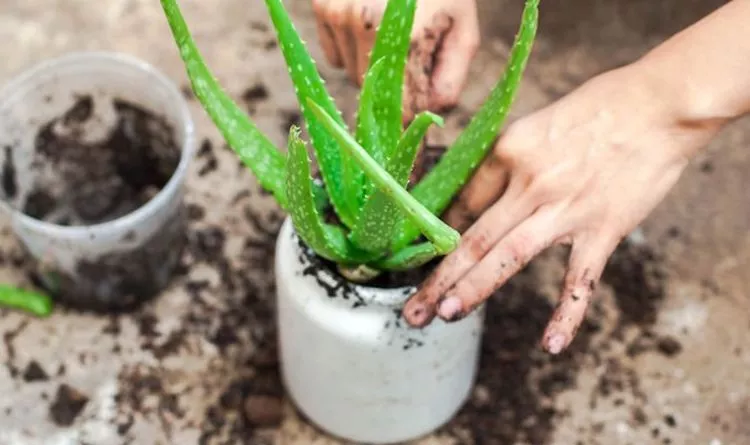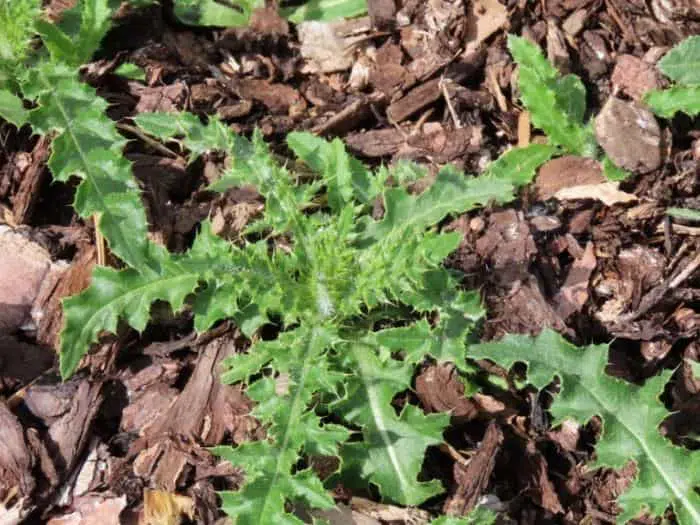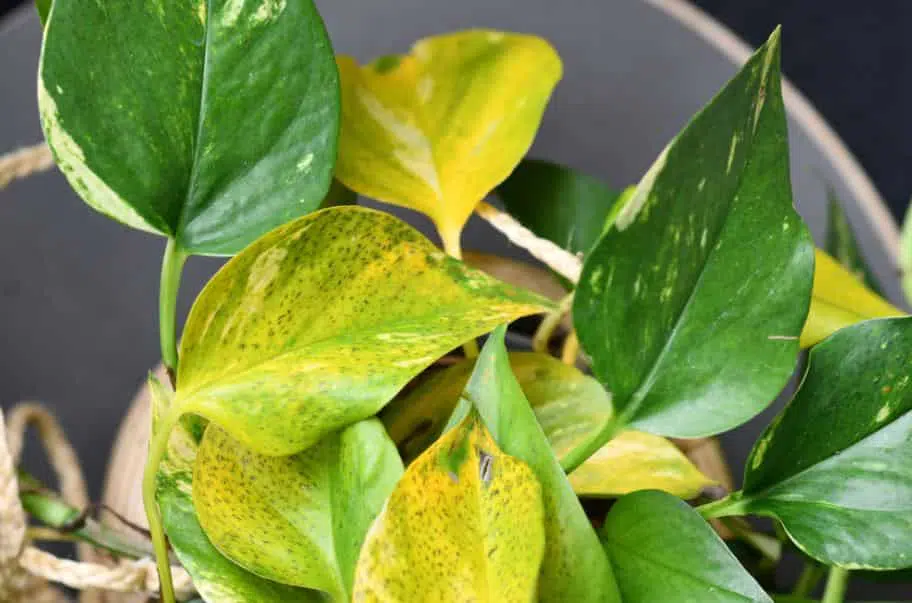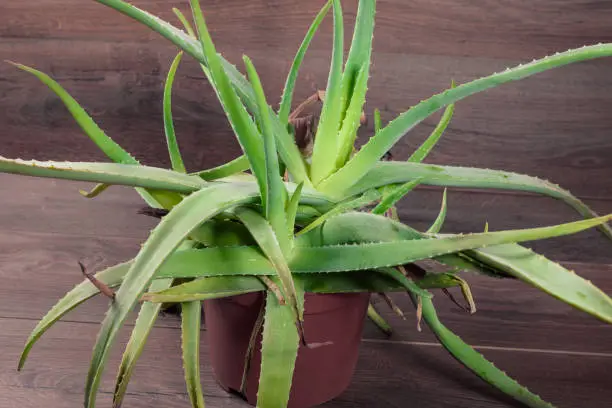In most cases, underwatering in pothos causes symptoms similar to those of disease, which is why you want to so make sure you know the actual problem before attempting a fix. But, what does an underwatered pothos look like and how do you save it?
An underwatered pothos will have its leaves wilting and curling on the edges. The potting mix will also appear dry and compacted, and in severe cases, the plant’s leaves will turn brown. Water your pothos once every week and mist its foliage frequently to save and revive the dying plant.
What does an underwatered pothos look like?
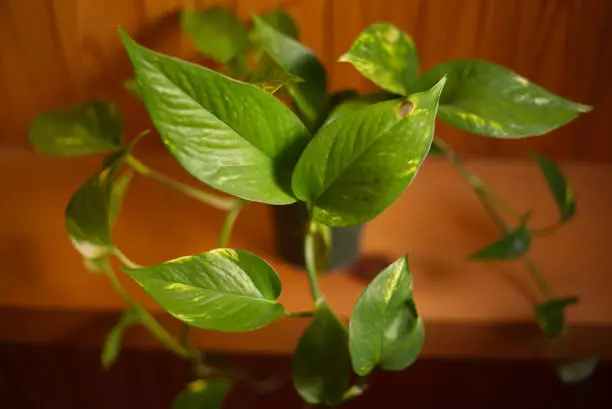
For the most part, simply looking at the foliage and the soil will help you determine if your pothos needs watering. Healthy foliage should be vibrant and deep in color (depending on the type of pothos) while thirsty plants will have ill-looking leaves.
Here are the signs of an underwatered pothos plant:
Wrinkled and drooping leaves
Underwatering is a primary cause of drooping pothos leaves. The plant requires consistently moist soil to retain vibrant foliage and maintain a balanced turgor pressure that makes the leaves look healthy and attractive.
RELATED: HOW TO REVIVE DROOPING POTHOS LEAVES
When underwater, its leaves appear saggy, wilted, and can become wrinkled over time. In addition, several other conditions such as overwatering, root rot, and pests can cause the leaves to sag, wilt, and appear droopy.
Although drooping leaves are clear indicators of underwatering, it’s vital to conduct further checks after noticing signs of drooping and curling foliage in pothos before concluding that drought is the problem.
Dry soil in the pot
Dry soil is a clear indicator that your indoor plant needs to be watered. You might also notice the soil become more compact and start to pull away from the outer edges of its pot.
A dry soil surface often appears dusty, brittle, and parched. Simply do a finger test to help you establish whether your plant’s potting medium has enough moisture to sustain a healthy pothos plant.
Poke your index finger in the potting soil and probe it at least 1-inch deep. If the soil is dry and it is not easy to penetrate the soil, your plant is probably underwatered.
Continuous exposure to dry soils can cause your plant to eventually dry out. Arid soils inhibit microbial activity (which limits access to essential nutrients) and impact how the pothos look, feels and grows if not corrected.
Stunted growth
Prolonged underwatering can result in slow growth for your pothos plant. Water is an essential component for healthy growth, so, limiting the plant’s access to water affects its ability to absorb nutrients from the soil. Insufficient water also affects important plant processes such as translocation and photosynthesis.
Pothos are vine-like plants that rely on water to maintain a rigid structure while climbing. Unlike succulents like aloe vera and pothos cannot store water for extensive periods within their tissues. Inadequate access to water can cause the plant to lose its shape and appear weak.
Although underwatering can cause stunted growth in your plant, it’s crucial to conduct further assessments to establish additional underlying conditions that can contribute to reduced growth and delayed maturation – especially lack of nutrients.
Curling leaf edges
Underwatering can cause your plant’s leaves to curl along the tips and edges. A pothos plant has broad leaves; the plant’s foliage is the most vulnerable to damage whenever your plant faces water issues.
Curling leaves in pothos can indicate a decline in the plant’s overall health. Pothos plant leaves curl as a defensive mechanism to prevent excessive water loss when the moisture quantity lost exceeds the amount absorbed from the roots.
Weak, brittle roots
Pothos roots can help you determine if your plant receives enough water. Healthy pothos plant roots appear firm and white. However, if your plant has underwatering issues, its roots will appear dry and brittle.
If you’re repotting your pothos, you want to make sure you examine the roots for such signs as well as those of root rot disease.
RELATED: HOW TO SAVE POTHOS PLANT FROM ROOT ROT
Roots play an essential role in your plant’s health. Unhealthy sources affect the plant’s ability to absorb and translocate minerals from the soil to the leaves. If you don’t want to uproot the plant, inspect the condition of its aerial roots to assess whether or not it is getting enough water.
Leaves turning yellow to brown
Underwatering causes color changes on your pothos leaves. First, the leaves wilt and begin to turn yellow. As a result, the plant adopts an unhealthy and unattractive appearance, further aggravating the situation.
If left unattended for a considerable time, the leaves start turning black and develop brown spots (which get more significant over time, causing entire leaves to dry and fall off). Therefore, consider water issues first whenever you notice the leaves of your pothos begin to turn yellow.
Additional issues such as inadequate sunlight and fungal and pest infestations can also cause your plant’s leaves to change from green to yellow/brown/black. However, water issues are the most prevalent cause of such changes.
How to save an underwatered pothos
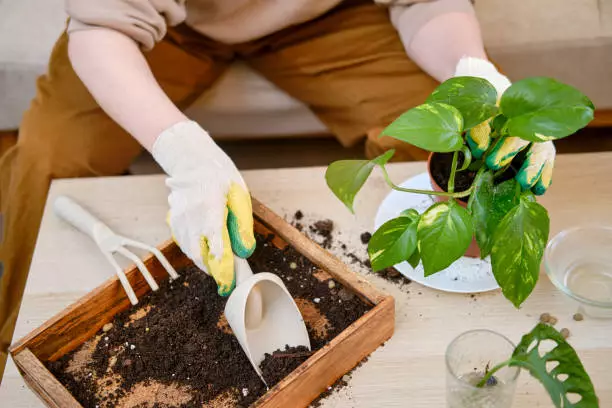
An effective way to save underwatered pothos is by increasing the plant’s water intake to a sustainable and healthy limit. Thirsty plants can take time to recover, so I’d advise that you remain patient while trying to save your golden pothos.
Here’s how to save an underwatered pothos:
1. Water your pothos once per week
Water your pothos once every week to keep the soil moist and revive the plant. However, adjust the watering schedule so that you reduce the frequency of watering just once every two weeks during the colder months of winter.
Pro tip: As a rule of thumb, pothos requires watering once every week during summer and after two weeks during winter but allow the soil to dry out between waterings. This will help you prevent overwatering the devil’s ivy plant.
Watering your plants keeps them healthy and stimulates plant growth.
Keep the underlying soil moist by watering regularly to promote a healthy pothos plant. You can expect your plant to revive after a few weeks of providing enough moisture especially if underwatering was the direct reason behind its unhealthy appearance.
2. Change the potting medium to a well-draining mix
Another important fix for underwatering is to repot the plant using a well-draining potting mix. A cactus soil mix is best for repotting your Epipremnum aureum if the problem is caused by soil that easily compacts or one that drains too fast.
Pothos plants thrive best when they have access to growing under moist soil conditions. However, some soils have high water retention features that can leave your pothos vulnerable to overwatering and root rot.
Choosing a potting medium with sufficient nutrient concentrations and high drainage is essential. The potting medium should retain a delicate balance between water retention and drainage to allow optimal growth. You can also use a blend of peat moss, perlite, and pine bark in a 2:1:1 ratio if you keep having watering problems with your devil’s ivy.
3. Maintain a 50-70% humidity level for pothos
Pothos grow best in a range of 50%-70% humidity. You can occasionally mist your plant’s leaves to reduce the plant’s exposure to intense sunlight, regulate transpiration, and maintain a moist/humid environment close to the plant.
4. Create drainage holes in the pot
Another important tip to revive dying pothos due to lack of water is creating drainage holes in the planter. Since Epipremnum aureum require moist soil, they can easily suffer from problems like being root-bound and lack of access to water when it pools at the bottom of the pot depending on the size of the plant.
Ensure that you create drainage holes at the bottom of the plant to allow the soil to drain excess water for a healthy watering schedule. These will prevent root rot and underwatering as you’ll maintain a healthy schedule.
5. Use watering globes
If underwatering your pothos is caused by poor scheduling or a busy lifestyle, I’d recommend watering globes to plant moms and dads. These come in handy even for those going on vacations.
RELATED: HOW LONG DO WATERING GLOBES LAST
Most plant watering globes last for 14 days and will keep the soil mix moist for the period you’ll be away, thus, preventing drought in your indoor plants.
Overwatered vs. Underwatered Pothos
Here are the differences between an overwatered and underwatered pothos plant:
| Overwatered Pothos | Underwatered Pothos |
| Has black squishy roots. | Has dry, brittle roots. |
| Foul smell coming from the potting medium. | No smell from the potting medium. |
| The soil appears wet and soggy. | The soil appears dry and compact. |
| Leaves droop and turn yellow. | Leaves wilt and curl on the edges. |
It can be challenging to tell if your pothos plant suffers from overwatering or underwatering as the two issues exhibit similar characteristics.
An overwatered/underwatered pothos displays yellow leaves, wrinkled foliage, and poor plant health. Unfortunately, it can be easy to confuse the signs, mainly when you have limited knowledge about how they vary.
